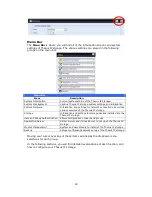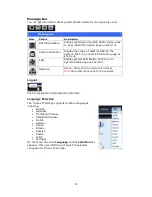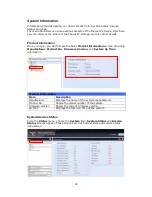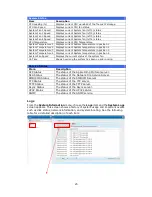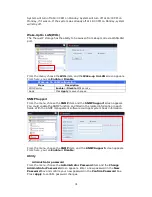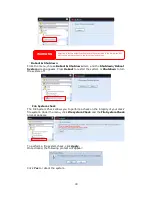
18
Enter
Enter the selected menu option, sub-menu, or parameter setting.
ESC
Escape
Escape and return to the previous menu.
There are two modes of operation for the OLED: Display Mode and Management
Mode.
Display Mode
During normal operation, the OLED will be in Display Mode.
Display Mode
Item
Description
Host Name
Current host name of the system.
WAN/LAN1
Current WAN/LAN1 IP setting.
LAN2
Current LAN2 IP setting.
Link Aggregation
Current Link Aggregation status
System Fan
Current system fan status.
CPU Fan
Current CPU fan status
2009/05/22 12:00
Current system time.
RAID
Current RAID status.
The N12000/N16000 series will rotate these messages every one-two seconds on
the OLED display.
Typical Setup Procedure
From the Web Administration Interface, you can begin to setup your Thecus IP
storage for use on your network. Setting up the Thecus IP storage typically follows
the five steps outlined below.
For more on how to use the Web Administration Interface, see
Chapter 4:
Web Administration Interface
.
Step 1: Network Setup
From the Web Administration Interface, you can configure the network settings of
the Thecus IP storage for your network. You can access the Network menu from
the menu bar.
For details on how to configure your network settings, refer to
Chapter 4:
System Network
.
Step 2: RAID Creation
Next, administrators can configure their preferred RAID setting and build their RAID
volume. You can access RAID settings from the menu bar of the Web Administration
Interface by navigating to Storage Management > RAID Configuration.
For more information on configuring RAID, see
Chapter 4: System Management >
RAID Configuration
.
Don’t know which RAID level to use? Find out more about the different RAID levels
from
Appendix
B
: RAID Basics
.
Step 3: Create Local Users or Setup Authentication
Once the RAID is ready, you can begin to create local users for Thecus IP storage, or
choose to setup authentication protocols such as Active Directory (AD).
For more on managing users, go to Chapter 4:
User and Group Authentication.
For more information on configuring Active Directory, see



















